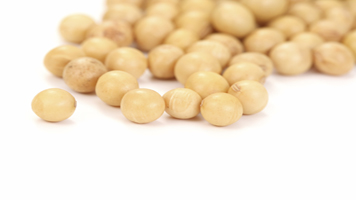Despite Slide, Soybeans Remain $1 Above Year Ago
Category: Grains, Miscellaneous, Oilseeds
 (Agriculture.com) – Markets have slid lower the past few days, extending the losses on Monday (yesterday) with some 25¢ losses in soybeans leading the way. While markets had been pushing higher prior to this correction lower, this has gotten the attention of the market with the level of losses. And the February break that typically pushes markets lower in early February hasn’t even started yet. We seemed to have stopped the rally at some significant resistance areas (with a downside reversal in corn January 24), and technical traders have sold off the market from those levels.
(Agriculture.com) – Markets have slid lower the past few days, extending the losses on Monday (yesterday) with some 25¢ losses in soybeans leading the way. While markets had been pushing higher prior to this correction lower, this has gotten the attention of the market with the level of losses. And the February break that typically pushes markets lower in early February hasn’t even started yet. We seemed to have stopped the rally at some significant resistance areas (with a downside reversal in corn January 24), and technical traders have sold off the market from those levels.
It probably doesn’t help that Argentina had about 10 days of dry weather after its heavy rains and some isolated flooding earlier this month. Or that Brazilian weather seems to remain almost ideal, with mostly normal to below-normal temperatures and normal precipitation almost the entire growing season. That points to a good South American crop of corn and soybeans, which applies some pressure as we approach harvest of these crops in Brazil.
Pro Ag noted last week that it was interesting that current new-crop prices for HRS wheat, corn, and soybeans are HIGHER than last year at this time in spite of much larger carryout projections. This week, however, those corn prices have dropped about 7¢, so now they are trading even with last year’s February crop insurance price of $3.86. However, soybean prices (even with Monday’s price collapse) are still over $1 above last year’s February average new-crop price of $8.85. HRS wheat prices are also higher than last year, currently trading September 17 at $5.55, while last year’s insurance price was $5.13. So insurance prices might be about even in corn, $1.20 higher in soybeans, and 42¢ higher in HRS wheat than last year.
With carryout of all three commodities much higher than last year, it is surprising that new-crop prices are currently trading above last year’s levels at this time. Soybean carryout is projected at 420 mb vs. 197 mb last year, corn at 2.355 billion bushels vs. 1.738 billion last year, and wheat at 1.186 billion bushels vs. 976 million last year. So the odd situation where prices are much higher than last year even with larger carryouts might be one reason the market is breaking currently. The soybeans may have some room to go further lower, but corn seems to have some solid support just below $3.54 March futures all the way down to the summer lows at $3.25. We may just trade in a range of 30¢ for the next few months, as prices don’t really need to go anywhere real fast given current large carryouts.
IF corn can trade all the way down to $3.25, the best market advice we could give at that point would be to buy, buy, buy! Buy everything you can, as that double bottom separated by six months or more should be very solid support. In fact, we’d probably not want to wait that long for prices to trade all the way down to the old summer lows in corn. Instead, you may want to place some buy orders in increments on the way down. Those who need to buy feed for livestock can start just about anytime from $3.54 on down. Just make sure to keep some bullets in your guns for buying IF corn were to go all the way down to $3.25, which is possible given the large carryouts and the relatively good South American crop.
But once we turn everyone bearish, the corn market will have to deal with a loss of anywhere from 4 to 6 million or more acres from last year. Then, yields are unlikely to be 175 bushels an acre again in 2017 like they hit for a record-shattering yield in 2016. Instead, trend yields are more like 170 bushels an acre, and the same can be said about U.S. soybean yields as they are unlikely to hit 52 bushels an acre when trend yields are 47.5 bushels an acre.
As we get into the end of March, the acreage intentions report will shock us back to reality (especially in corn, where significant acreage is likely to be lost). The focus will then turn from large old-crop stocks to the new possibilities of 2017 (which includes a possibility of below trend yield crops in the major grains as well). Can you say “weather premium?” It’s likely we’ll hear that phrase a lot as we enter into spring. And as is typical, the best sales opportunities for farmers might come in late spring/early summer (especially for corn and wheat).
Yes, hope springs eternal as we head into spring, and while the back and forth of the market may seem frustrating right now in its rangebound-type trade, it may only have a few months left of this type of trade. Then spring will work its magic again, and farmers may yet have an opportunity to sell something at a profit.




